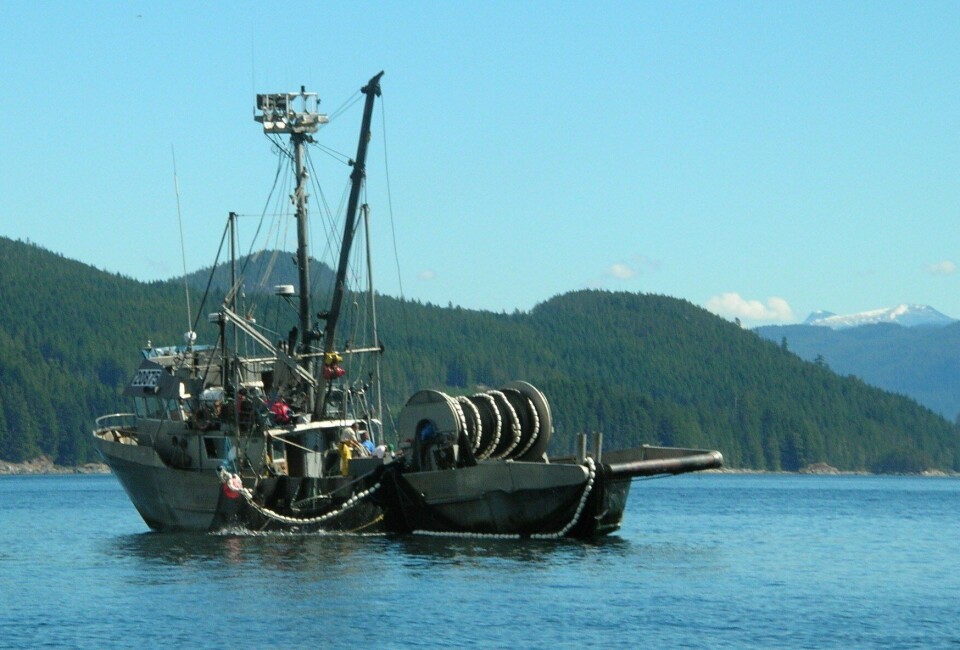
Opportunity for Alaskan salmon in China- temporary?
There has been much writing about customers normally relying on farmed salmon from Chile switching to inexpensive product from Alaska during the period of rebuilding the Chilean salmon farming industry. But with the increased output and marketing efforts conducted by Norwegian companies and sales organizations, along with the sometimes stark differences in the quality of the different products, this may not lead to the big benefits for Alaska as has been envisioned, as Bob Tkacz of the Alaska Journal of Commerce explains in these excerpts from a recent article;
A window of opportunity to increase Alaska salmon sales — which producers suggested last spring might be open as long as four years — is beginning to close. The Chilean salmon farming industry is recovering more quickly than expected from a viral epidemic that struck in 2009, meanwhile Pacific salmon farming in closed containment freshwater tanks is starting in China.
The window opened in 2009, when an epidemic of infectious salmon anemia slashed production from the 20-year-old Chilean fish farming industry from a peak of about 650,000 metric tons in 2008 to barely half that in the past two years. "The industry is recovering faster than expected. Now they are strong like the Phoenix," Jose Ignacio Cruz Amenabar, sales manager of Chilean salmon producer Cruz Alta S.A., said at the annual China Fisheries and Seafood Exposition, held Nov. 2-4.
Amenabar said Chilean farm operators thought it would take about five years to recover. "That two to four years is the window we have to bootstrap our industry up to world standards," Bob Waldrop, executive director of the Bristol Bay Regional Seafood Development Association, said at an Alaska legislative hearing in April. "Their plight in Chile is our opportunity. We've got to be ready to compete with expected flood of farmed product in 2013 and after."
For 2011 Chilean famers are going to produce 20 to 25 percent less than a normal year, Amenabar said. This year was 50 percent less. Felipe Rojas, sales manager for Cruz Alta S.A., said Chilean production was about 100,000 tons in 2010, down from 400,000 in 2008. "Next year it will go up to 150,000, but it will be very slow," Rojas said. Although the epidemic has passed, Chilean officials say a new aquaculture law, expected to take effect in 2012, will slow the revival of the industry. The law will set minimum distances between farms and maximum density of salmon in net pens.
Rojas said specific limits had not been finalized, but he estimated the restrictions would increase overall operating costs by 30 percent. In response to the spacing requirements, the industry is expanding southward from its epicentre around the city of Puerto Montt. Rojas also noted that Chilean banks are more cautious in their loans to salmon farmers and news accounts say other bank demands are facing opposition from Chilean environmentalists and wild stock harvesters.
Chilean newspaper Tierramerica reported in August that farm output is predicted at about 300,000 metric tons in 2010. Norwegian farmed salmon filled the Chilean gap in China as well as in the U.S. in the past couple of years, but the Chileans expressed confidence that they will regain their market share. "I don't think there will be big issues with that. I think the market will accept Chilean products. We are having questions worldwide asking when you're product will be available, especially from China. It's very encouraging," Amenabar said.
At the China Seafood Expo, some wondered if Norway's imports to China would suffer as part of the Chinese government's dismay with the Nobel Peace Price award to jailed dissident Liu Xiaobo. Åshild Naaken, head of the Norwegian Seafood Export Council in China, said Nov. 3, "It's business as usual." Although the Chinese government cancelled two ministerial-level meetings shortly after the prize was announced, the Minister of Agriculture participated in an event at the Shanghai World Expo marking the delivery of the 10 millionth Norwegian salmon to China since imports began in 1994. "If you wanted to hit something, that would have been very telling," Naaken said.
Norway sold 130,000 metric tons of salmon, worth $285 million, to China in 2009 and expects to set a new record this year, Naaken added. Chilean salmon did compete with Norway in the fresh segment, but the last couple of years Norway has taken a percentage from fresh whole gutted, Naaken said. Norwegian salmon is a standard item in most modern grocery stores in China, including Wal-Mart. Naaken said her country holds 90 percent of the Chinese salmon market and is preparing to increase its share with a $1 million addition to its current $1.55 million salmon promotions budget for mainland China and Hong Kong. "They wouldn't have done it if they didn't think this was a market with huge potential," Naaken said. The Alaska Seafood Marketing Institute's current budget to market all species in China is about $900,000.





















































